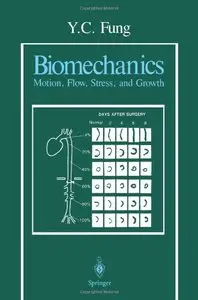Biomechanics: Motion, Flow, Stress, and Growth by Y.C. Fung
English | October 2, 2013 | ISBN: 1475759134 | 570 pages | PDF | 12 MB
English | October 2, 2013 | ISBN: 1475759134 | 570 pages | PDF | 12 MB
Biomechanics aims to explain the mechanics oflife and living. From molecules to organisms, everything must obey the laws of mechanics. Clarification of mechanics clarifies many things. Biomechanics helps us to appreciate life. It sensitizes us to observe nature. It is a tool for design and invention of devices to improve the quality of life. It is a useful tool, a simple tool, a valuable tool, an unavoidable tool. It is a necessary part of biology and engineering. The method of biomechanics is the method of engineering, which consists of observation, experimentation, theorization, validation, and application. To understand any object, we must know its geometry and materials of construc tion, the mechanical properties of the materials involved, the governing natural laws, the mathematical formulation of specific problems and their solutions, and the results of validation. Once understood, one goes on to develop applications. In my plan to present an outline of biomechanics, I followed the engineering approach and used three volumes. In the first volume, Biomechanics: Mechanical Properties of Living Tissues, the geometrical struc ture and the rheological properties of various materials, tissues, and organs are presented. In the second volume, Biodynamics: Circulation, the physiology of blood circulation is analyzed by the engineering method.



